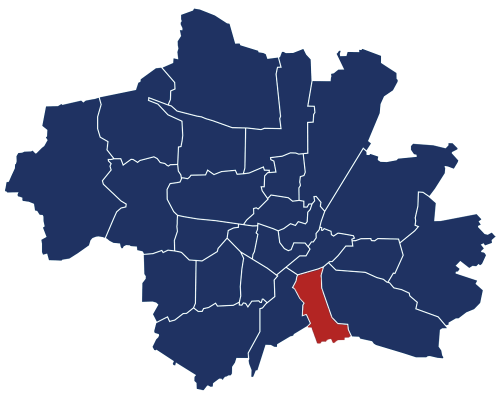Obergiesing-Fasangarten
General information about Obergiesing-Fasangarten
Obergiesing-Fasangarten is one of Munich’s 25 boroughs and consists of the districts Obergiesing and Fasangarten. The borough is located in the southern part of Munich and covers an area of 571.46 hectares. Obergiesing-Fasangarten has around 51,183 inhabitants, which represents an average to low population size compared to other Munich boroughs.
Key figures and location
The borough is located in the southern part of Munich and borders Untergiesing-Harlaching to the west, Ramersdorf-Perlach to the east, and the municipalities of Unterhaching and Neubiberg to the south. The Fasangarten settlement in the south originated from a pheasantry established in the 18th century and was incorporated into Munich in 1937. The “Ami-Siedlung” settlement is a significant part of Fasangarten and reflects the former presence of the U.S. military.
Subdivision of the borough
Obergiesing-Fasangarten is divided into two district sections: Obergiesing in the north and Fasangarten in the south. Both districts have developed differently over the years, with Fasangarten being strongly influenced by the American occupation in the 20th century.

Subdivision of Obergiesing-Fasangarten
Population structure
The district has a high proportion of residents aged “15 to under 45,” making up approximately 49% of the total population. The proportion of foreign nationals is 29.15%. There is a positive migration trend, and the population continues to grow steadily. In 1987, the district had 42,023 inhabitants; today, the number exceeds 51,000.
Area and Land Use
The total area of Obergiesing-Fasangarten is 571.46 hectares, of which around 60% is used for residential purposes. Commercial use is low, accounting for only 1.5% of the total area. Green spaces are limited, with 5.2% of the district designated as recreational areas. Traffic areas make up 21.2% of the total area.
Culture, Education, and Public Institutions
The district offers a wide range of educational institutions, including 7 primary schools, one secondary school (Gymnasium), and several vocational schools. There are also two public libraries available. However, the district lacks cultural institutions such as museums or theaters. Healthcare is provided by two hospitals and numerous private medical practices.




